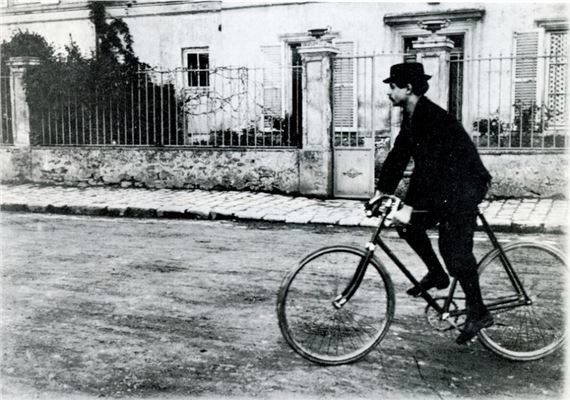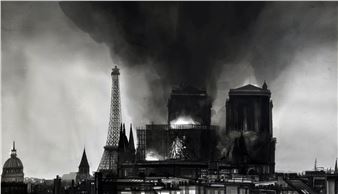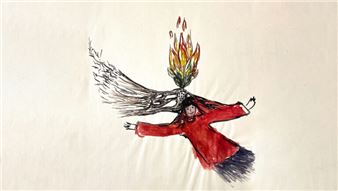Absurd Kingdom: The Parodistic World of Truant Art
The exhibition provides an insight into Hungarian and European fine art linked to pataphysics, with a focus on the influence exerted by Alfred Jarry’s drama King Ubu, which started off as a student prank and morphed into a nightmare farce, on fine art. Pataphysics is the (pseudo)science of inverted, imaginary solutions for questions of the world, originating from the French playwright Alfred Jarry, who is now considered by theatre studies to be the forefather of absurd drama. Jarry, however, had a major influence not only on theatrical art but also on the symbolists active at the turn of the century as well as on the greatest avant-garde artists of the first half of the 20th century. Bonnard, Toulouse-Lautrec, Rousseau and Picasso were all inspired by Jarry, and through the international College of Pataphysics, established in 1948 and largely operating in secret, which created a system and continuity for pataphysics, a huge number of artists dealing with pataphysics emerged. The satraps or leaders of the College included Boris Vian, Raymond Queneau, Eugene Ionesco as well as Marcel Duchamp, Joan Miró, Max Ernst, Jean Dubuffet, Maurits Cornelis Escher and Umberto Eco.
Divided into four sections, our exhibition presents the influence of Jarry and pataphysics from its historical context to the present day.

Recommended for you
The exhibition provides an insight into Hungarian and European fine art linked to pataphysics, with a focus on the influence exerted by Alfred Jarry’s drama King Ubu, which started off as a student prank and morphed into a nightmare farce, on fine art. Pataphysics is the (pseudo)science of inverted, imaginary solutions for questions of the world, originating from the French playwright Alfred Jarry, who is now considered by theatre studies to be the forefather of absurd drama. Jarry, however, had a major influence not only on theatrical art but also on the symbolists active at the turn of the century as well as on the greatest avant-garde artists of the first half of the 20th century. Bonnard, Toulouse-Lautrec, Rousseau and Picasso were all inspired by Jarry, and through the international College of Pataphysics, established in 1948 and largely operating in secret, which created a system and continuity for pataphysics, a huge number of artists dealing with pataphysics emerged. The satraps or leaders of the College included Boris Vian, Raymond Queneau, Eugene Ionesco as well as Marcel Duchamp, Joan Miró, Max Ernst, Jean Dubuffet, Maurits Cornelis Escher and Umberto Eco.
Divided into four sections, our exhibition presents the influence of Jarry and pataphysics from its historical context to the present day.

 ARTISTS
ARTISTS
















